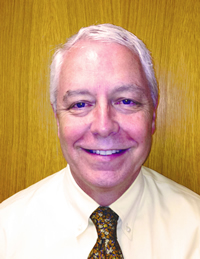The updated ACR Workforce Survey finds that rheumatologists are about to get even busier.
An ACR workforce report in 2005 projected a shortage of 2,500 rheumatologists in the United States by 2025. The updated fellow-in-training survey and patient surveys now project a shortage of 3,800 rheumatologists in the United States by 2025, an increase from the 2005 ACR Workforce Study that projected a shortage of 2,500 rheumatologists.
 “Half of all current rheumatologists are Baby Boomers, and they are very likely to retire over the next 15 years,” said Daniel F. Battafarano, DO, MACP, FACR, Chief of Rheumatology at the San Antonio Military Medical Center, Professor of Medicine at the Uniformed Services University of the Health Sciences, and Adjunct Professor of Medicine at the University of Texas Health Science Center in San Antonio. “Add to that a significant gender shift and generational shift to Millennials, and we will decrease productivity and decrease access to care for rheumatology patients.”
“Half of all current rheumatologists are Baby Boomers, and they are very likely to retire over the next 15 years,” said Daniel F. Battafarano, DO, MACP, FACR, Chief of Rheumatology at the San Antonio Military Medical Center, Professor of Medicine at the Uniformed Services University of the Health Sciences, and Adjunct Professor of Medicine at the University of Texas Health Science Center in San Antonio. “Add to that a significant gender shift and generational shift to Millennials, and we will decrease productivity and decrease access to care for rheumatology patients.”
Dr. Battafarano will present the results of the College’s latest workforce projection during The Rheumatology Workforce: Present and Future on Monday from 4:30 – 6:00 pm. He co-chaired the 2015 ACR Workforce Study Group that examined the current workforce in detail and projected both the supply and demand of rheumatologists by 2030.
The broad trend is similar to findings from the 2005 ACR Workforce Study, he said. What has changed is the size of the gap between rheumatology provider supply and patient demand.
“We all knew this shortfall was projected, but increasing the number of fellowship positions and the ability to recruit physician assistants and nurse practitioners has been inadequate to compensate for the dramatic shifts in our rheumatology workforce,” Dr. Battafarano said. “Our findings in the 2015 rheumatology workforce study reflect ongoing challenges for the entire medical profession. There will be very similar workforce problems for other medical subspecialties.”
The task force was charged with defining the scope of the problem, Dr. Battafarano said. A patient-centered integrated workforce methodology helped the group refine the current state of the rheumatology profession to project future supply-and-demand estimates based on best- and worst-case scenarios.
Workforce assessments and projections have been traditionally based on the total number of board-certified rheumatologists. The working assumption that every rheumatologist is available for full-time patient care is an inaccurate reflection of rheumatology providers available for patients. Board-certified rheumatologists working in industry or pure research may not see any patients, for example.
The 2015 Workforce Study Group accounted for supply and demand using clinical full-time equivalents (FTEs) rather than a simple count of board-certified rheumatologists.
Rheumatologists in academic centers split their time between patient care, research, and academic duties. A clinical professor often devotes 50 percent of work time (0.5 FTE) to patient care, while most private practice rheumatologists dedicate close to 100 percent (1.0 FTE) of their time to patient care.
BUSINESS/ADMINISTRATION TRACK
The Rheumatology Workforce: Present and Future
4:30 – 6:00 pm Monday • Room 143A
Hear about the ACR Workforce Study report and discuss strategies to address the issues raised by the study.
